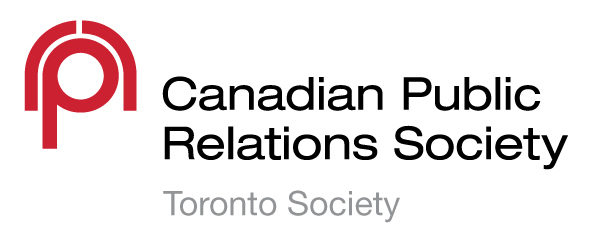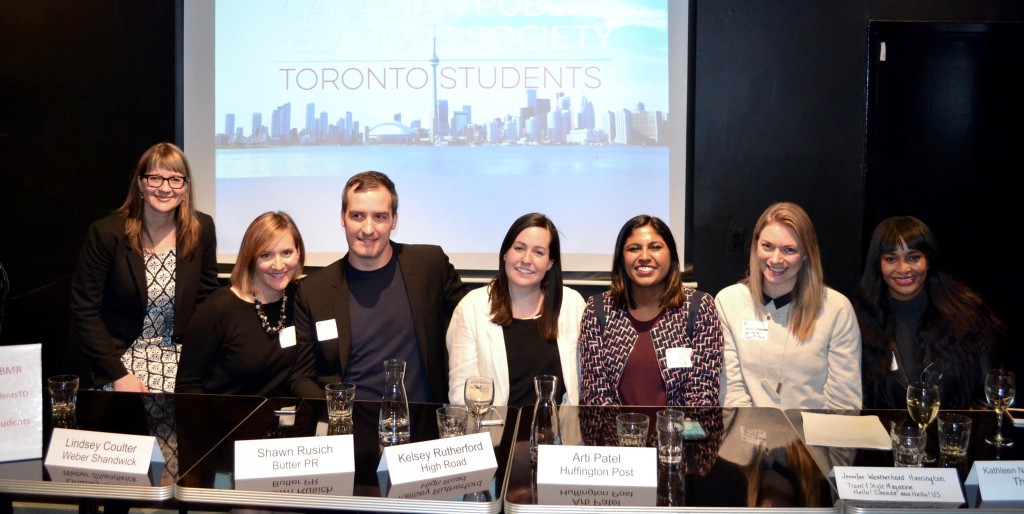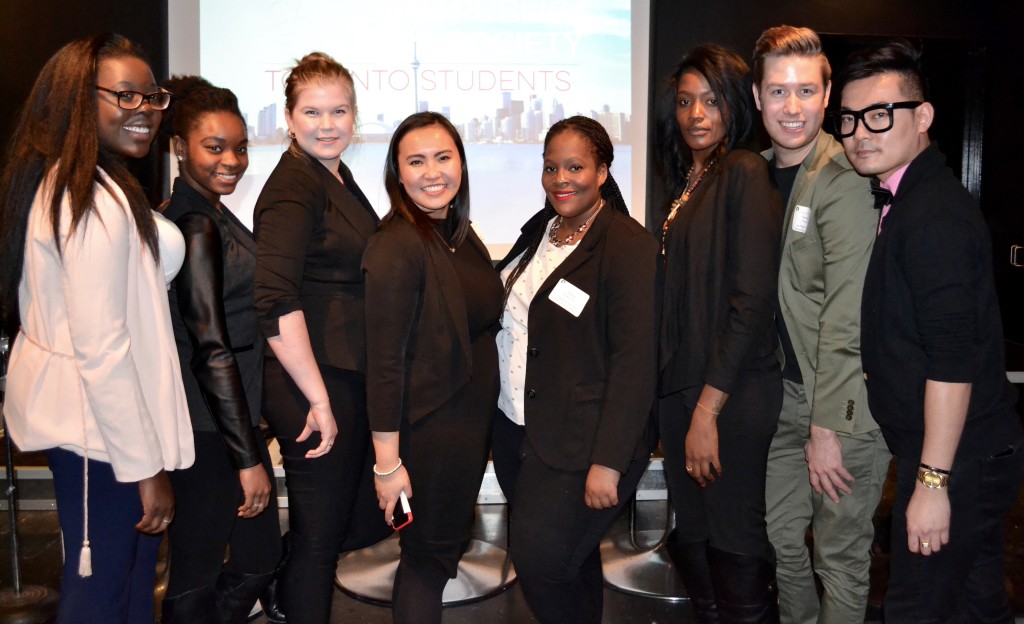On Thursday, February 11 the CPRS Toronto’s Student Steering Committee (SSC) hosted their fifth-annual Building Media Relationships event at The Pilot in downtown Toronto.
Every year, a panel of media and public relations professionals share their insights and key advice with attendees.
This year’s panel included: Lindsey Coulter, Weber Shandwick; Shawn Rusich, Butter PR; Kelsey Rutherford, High Road Communications; Arti Patel, Huffington Post Canada; Jennifer Weatherhead Harrington, Travel & Style Magazine; and Kathleen Newman-Bremang, The Social. CNW Group‘s Laurie Smith moderated the lively panel discussion.
Here are the top six takeaways from the event:
- Do your research.
Before you reach out and pitch to a journalist, know what they write about and what beat they cover. Questions to consider include: Do they create content for my target demographic? Is this the best medium?
“It is important to really understand how they write and why they write.” – Arti Patel
- Be personal.
Craft each email pitch to be personal and tailor the story to align with the journalist’s beat. This proves you are proactive and clued into their needs.
“If the email has a generic “hi” then I won’t even read it.” – Kathleen Newman-Bremang
Pro Tip: Kelsey suggested keeping notes about a reporter’s likes and dislikes for future use. For example, whether they prefer email or phone pitches.
- Stand Out.
Laurie Smith shared the interesting statistic that PR professionals outweigh journalists 4-1. This means reporters are constantly being bombarded by pitches. To make your pitch stand out, write a very tailored and catchy subject line. Simplify the reporter’s job by putting ‘the ask’ in the subject line.
“The art of writing a subject line is important. Tailor it to get their attention.” – Jennifer Weatherhead Harrington
- Be Respectful
Every good media relationship is based on courtesy and respect. The panelists agreed that it is unprofessional to pitch through personal social media.
On the topic of questions public relations practitioners should never ask the media, these were some of their pet peeves:
“Don’t ask if you can have creative control. We respect what you are promoting, but you also need to let us do our job.” – Kathleen Newman-Bremang
“Don’t ask who my demographic is. Your research should have already told you who they are” – Jennifer Weatherhead Harrington
- Be resourceful.
During the pitching process, make the journalist’s job easier by providing them with the right content that works best for the outlet.
Bloggers: Provide them with samples of the product so they can test it and reflect on her own experience.
Online news: Send pictures, infographics and social media content that aren’t too branded to be published.
Broadcast television: Provide video content of the guest or spokesperson as well as any related promotional materials.
Pro Tip: if your client will be interviewed on TV, the segment producer needs to see for themselves if they will look good and interview well, hence videos.
- Stay informed.
With the world of social media and the emergence of influencers and the media landscape changing rapidly, it’s important to keep up with the latest trends.
“The landscape is changing, but it’s forcing us to be more innovative.” – Kelsey Rutherford
There is so much to learn within the ever-evolving world of public relations, but two aspects prevail: good manners and preparation.
More quotes and learning insights can be found on the SSC’s Twitter handle: @CPRSStudents
Check out more photos from the event on our Facebook page: Facebook/CPRSTorontoStudents
—
Written by: Alessandra Manieri student in Humber College’s Public Relations Post-Graduate Program.



